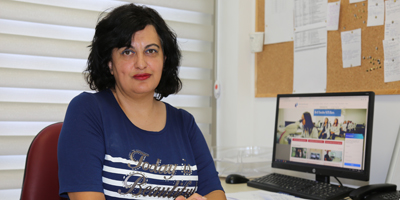EUL Academician Aslay gave information about Earthquake Week

European University of Lefke (EUL) Vocational School of Health Services, Department of First and Emergency Aid Asst. Prof. Dr. Semra Aslay gave some information about the 1-7 March Earthquake Week.
The strongest earthquake on the island of Cyprus occurred in 1222
Aslay made the following statements at the beginning of his statement; One of the most important moments of human helplessness in the face of nature is experiencing an earthquake. An earthquake occurs when the suddenly emerging energy in the earth’s crust causes seismic waves and as a result, the ground shakes. Depending on the intensity of these waves, destructive effects occur. The Richter scale is most often used to determine the intensity of earthquakes. This scale was invented by the American C. Richter in 1930. The magnitude of an earthquake determines the amount of energy released; The intensity of the earthquake shows its effect on people, structures and the earth. Therefore, if the destructive effect of the earthquake on the earth is high, the intensity of that earthquake may be greater than its magnitude. The biggest earthquake recorded in the world was in Chile on May 22, 1960 and its intensity was evaluated as 9.5. The biggest earthquake in Turkey in the 20th century occurred in Erzincan on 27 December 1939, resulting in 33 thousand casualties and more than 116 thousand injuries. According to official records, the death toll in the earthquake in Gölcük on 17 August 1999 was 17,480 and the number of injured people was more than 70,000. According to the records, the strongest earthquake on the island of Cyprus occurred in 1222. In the southwest of the island, the Paphos Castle was destroyed, the coastal part changed its shape due to the recession of the waters and then rising and hitting.
Aslan continued his words as follows: Living close to a fault line does not always mean there will be risk. In particular, the construction of buildings and floors need to be checked. In addition, the population of the region should be able to gather in previously determined open areas not only in earthquakes but also in every possible disaster. In this, city planning should be done in such a way as to include these areas. Apart from the sufficient disaster assembly areas, the society should also know these open areas beforehand. Activities such as public service announcements, signboards, commemoration days and weeks to raise awareness, and teaching them as lessons in schools should be organized.
The most important thing to do in the event of an earthquake is to predict what will happen and act accordingly.
“In order to raise this awareness, it is celebrated as earthquake week between 1-7 March every year. Most people think that they will live without encountering any disaster that nature will create in their lives. However, the main disaster is not to be prepared for it,” said Aslay, adding that the most important thing to do in the event of an earthquake is to predict what will happen and act accordingly. Especially homes or offices should be arranged accordingly. Since an emergency exit will be required, items that can slip out of place and block the door in case of possible shaking should not be kept in the entrance door or corridor. Any item or material to be hung on the walls or ceiling should be reinforced and mounted in place. All kinds of potentially explosive materials should be kept in such a way that they do not move in the event of shaking. Exit routes should always be open and wide corridors. Elevators should not be used in the event of an earthquake, if the probability of exiting the building is low, the door gaps close to the columns, which are the strongest parts of the house, should be kept under the table if not possible. In these small, but if necessary, effective areas, a triangular gap will be formed in the moments of dent, so enough oxygen supply can be provided to the person. It is quite dangerous to go out to the balcony and run towards the stairwell if it is lived on the upper floors. If possible, an earthquake bag should be prepared and its contents should be checked at least twice a year. Streets and streets should be left empty for the teams that will come to help.
Aslay: It should not be forgotten that we can only overcome these disasters by being prepared, not only during the earthquake week.
At the end of his statement, Aslay said, “Besides all these suggestions, it should not be forgotten that the most important way to protect against earthquakes is preparation, exercise and education beforehand. The destructive effects of nature can occur anywhere at any time. The real risk here is panic, lack of education and coordination disorder. “We should not forget that we can overcome these disasters not only during the earthquake week, not only by living, but also by always being prepared. It is not an earthquake, but carelessness against an earthquake, unfortunately, has these painful consequences,” she concluded.
